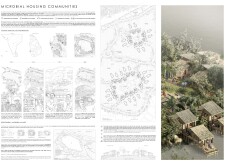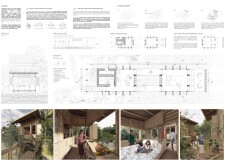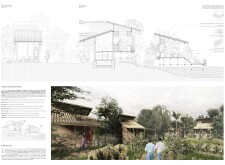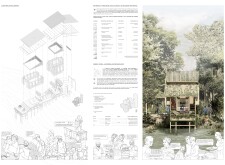5 key facts about this project
### Overview
The Microbial Housing Communities project is situated in a region that underscores the necessity for environmentally sustainable housing solutions. This initiative aims to merge architectural design with principles of microbial biotechnology, focusing on concepts of communal living and ecological responsibility. The design seeks to confront contemporary environmental challenges while fostering social cohesion among residents.
### Spatial Configuration and Community Interaction
The layout is thoughtfully organized to promote social interaction, employing a radial design that ensures efficient access to communal facilities and resources. This arrangement mirrors traditional village models, integrating shared public areas such as gardens and recreational spaces into the community fabric. Such spatial strategies encourage neighborly engagement and create a sense of belonging among residents.
### Material Selection and Sustainability
A deliberate choice of materials underpins the project’s commitment to sustainability. Structural elements will incorporate bamboo for its strength and rapid renewability, while recycled wood and composites made from repurposed plastics enhance durability and reduce waste. Additional natural fibers will be utilized in non-load-bearing constructions to support both environmental goals and cost-effectiveness. These material selections not only align with the project’s ecological objectives but also contribute to energy efficiency and low-carbon living environments.

























































